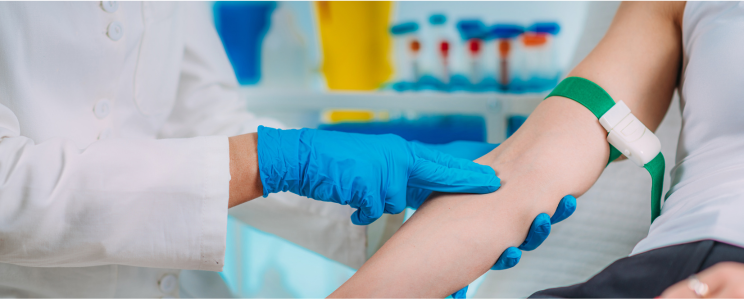The smart Trick of Northeast Medical Institute - New Haven Campus Phlebotomy Course & Cna Class That Nobody is Talking About
The smart Trick of Northeast Medical Institute - New Haven Campus Phlebotomy Course & Cna Class That Nobody is Talking About
Blog Article
The 8-Second Trick For Northeast Medical Institute - New Haven Campus Phlebotomy Course & Cna Class
Table of ContentsThe Main Principles Of Northeast Medical Institute - New Haven Campus Phlebotomy Course & Cna Class The Ultimate Guide To Northeast Medical Institute - New Haven Campus Phlebotomy Course & Cna ClassThe smart Trick of Northeast Medical Institute - New Haven Campus Phlebotomy Course & Cna Class That Nobody is Talking AboutFacts About Northeast Medical Institute - New Haven Campus Phlebotomy Course & Cna Class UncoveredNortheast Medical Institute - New Haven Campus Phlebotomy Course & Cna Class - TruthsSome Known Facts About Northeast Medical Institute - New Haven Campus Phlebotomy Course & Cna Class.
The use of such tools must be accompanied by various other infection prevention and control practices, and training in their use.For setups with low resources, price is a motoring consider purchase of safety-engineered tools - Phlebotomy Classes. Where safety-engineered gadgets are not offered, knowledgeable use a needle and syringe is acceptable. Unintentional direct exposure and specific details about a case ought to be videotaped in a register. Assistance solutions must be advertised for those that undergo unexpected direct exposure.
In the blood-sampling room for an outpatient department or facility, supply a comfy reclining sofa with an arm remainder.
4 Simple Techniques For Northeast Medical Institute - New Haven Campus Phlebotomy Course & Cna Class
Make sure that the indicators for blood tasting are plainly specified, either in a written method or in documented guidelines (e.g. in a lab form). In all times, adhere to the approaches for infection prevention and control detailed in Table 2.2. Infection prevention and control methods. Gather all the tools required for the procedure and place it within risk-free and very easy reach on a tray or cart, making sure that all the things are clearly visible.
Where the client is adult and aware, follow the actions outlined below. Introduce on your own to the person, and ask the patient to specify their full name. Check that the research laboratory kind matches the client's identity (i.e. match the person's details with the research laboratory form, to guarantee accurate recognition). Ask whether the license has allergic reactions, fears or has actually ever fainted throughout previous injections or blood draws.
Make the client comfy in a supine position (if feasible). The patient has a right to decline a test at any kind of time before the blood sampling, so it is crucial to ensure that the client has actually recognized the treatment - PCT Classes.
All About Northeast Medical Institute - New Haven Campus Phlebotomy Course & Cna Class
Extend the patient's arm and evaluate the antecubital fossa or forearm. Find a vein of a good size that is visible, straight and clear.
DO NOT insert the needle where capillaries are diverting, since this increases the possibility of a haematoma. The vein must show up without applying the tourniquet. Situating the vein will help in identifying the proper dimension of needle. Use the tourniquet about 45 finger sizes above the venepuncture website and re-examine the vein.
Haemolysis, contamination and existence of intravenous fluid and medicine can all alter the outcomes (39. Nursing team and medical professionals might access main venous lines for specimens following methods. Specimens from main lines lug a danger of contamination or incorrect lab examination outcomes. It serves, however not perfect, to injure specimens when first presenting an in-dwelling venous tool, before attaching the cannula to the intravenous liquids.
Not known Facts About Northeast Medical Institute - New Haven Campus Phlebotomy Course & Cna Class
Failing to permit sufficient contact time enhances the danger of contamination. DO NOT touch the cleaned up site; in certain, DO NOT place a finger over the vein to lead the shaft of the revealed needle.
Ask the individual to develop a clenched fist so the blood vessels are much more noticeable. Get in the capillary swiftly at a 30 level angle or less, and proceed to present the needle along the blood vessel at the simplest angle of access - CNA Classes. As soon as enough blood has actually been gathered, launch the tourniquet BEFORE withdrawing the needle
The Best Guide To Northeast Medical Institute - New Haven Campus Phlebotomy Course & Cna Class
Take out the needle gently and use gentle stress to the website with a tidy gauze or completely dry cotton-wool ball. Ask the individual to hold the gauze or cotton woollen in position, with the arm extended and increased. Ask the individual NOT to bend the arm, due to the fact that doing so triggers a haematoma.

The Best Strategy To Use For Northeast Medical Institute - New Haven Campus Phlebotomy Course & Cna Class
Do not press the syringe bettor due to the fact that extra pressure enhances the threat of haemolysis. Where feasible, keep the tubes in a shelf and move the rack towards you. Inject downwards right into the suitable coloured stopper. DO NOT remove the stopper since it will release the vacuum. If the sample tube does not have a rubber stopper, inject exceptionally gradually into television as reducing the pressure and rate made use of to move the sampling lowers the threat of haemolysis.

Report this page